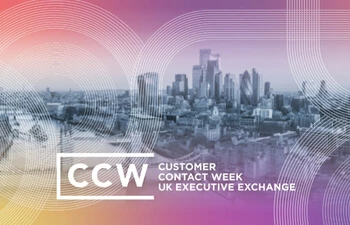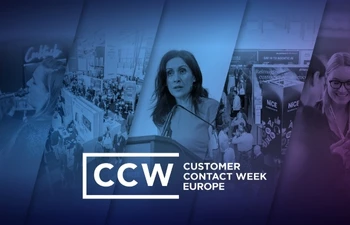Customer Service Excellence: The Complete Guide
From building a service-first culture and empowering teams, to using insights and digital tools to create memorable CX that set your brand apart.
Add bookmark
A single poor interaction can cost a company a loyal customer, while an exceptional one can turn a first-time buyer into a lifelong advocate. That’s why customer service excellence is a critical differentiator in a competitive marketplace.
Here we outline how you can achieve true customer service excellence.
What is customer service excellence?
Excellence in customer service goes beyond providing the basic level of service customers expect – it means exceeding their expectations. This is important for businesses to remain competitive, and to meet increasing demands for service.
While the specific approach to achieving this will vary by industry, there are several key markers of a business that delivers customer service excellence:
- It understands customers’ needs.
- Queries are addressed promptly and accurately.
- Issues are addressed proactively, before they even arise.
- Service is always professional, friendly and customer-centric – whether provided by agents or chatbots.
- Interactions and experiences are consistent and reliable, across all channels and touchpoints.
- Frontline staff such as contact centre agents, are engaged, trained and supported in delivering excellent customer service.
Why customer service excellence matters
It sounds obvious that excellent customer service leads to happy customers, which is crucial for the success of any company. And customer satisfaction improves retention rates – people are far more likely to stay loyal to your brand if you are consistently exceeding their expectations. Importantly, it can cost up to seven times more to attract new customers than to retain existing ones.
Here are a few more reasons why investing in customer service excellence not only boosts satisfaction and loyalty, but also drives tangible business results:
- Brand reputation: Positive experiences drive word-of-mouth and online reviews, helping to attract more customers.
- Competitive advantage: In saturated markets, service quality often determines customer choice. For example, someone may be happy to pay a little more for better service than having to shop around for cheaper alternatives.
- Revenue growth: Happy customers are also likely to spend more with you, trying new products or services.
How to build a culture of service excellence
Now we’ve established why it’s important, how can you ensure service excellence is built into the DNA of your organisation?
1. Lead by example
Culture starts at the top. Leaders must consistently model customer-first behaviour and prioritise service excellence in decision-making, internal communications and performance metrics.
However, our most recent State of Customer Management report found that 40 percent of the organisations we surveyed do not currently have an executive leadership team dedicated to driving customer experience transformation.
Without this, there can be a lack of clarity around who holds responsibility for delivering seamless, unified journeys that strengthen customer engagement and advance the company’s commitment to great service.
2. Align around a shared vision
Once a clear goal has been established at the leadership level, everyone in the company should understand how their role impacts customer experience. A clear vision, supported by cross-department collaboration, ensures alignment and consistency across all touchpoints. When every employee sees this aspiration, the expected outcomes and the logic underpinning this, they can absorb it faster and start making decisions for themselves that feed into the goal of providing excellent customer service.
With this in place you can begin to implement programmes that equip your employees with the skills they need to deliver this – as explained in the next point.
3. Empower your people
Frontline employees are usually the first touchpoint customers will interact with; they are essentially the face of your brand. If they have the tools, the knowledge and the confidence to solve problems creatively and independently, they will be more likely to go the extra mile for customers.
At the hiring stage, look for candidates with a customer-focused mindset. Steve Gush, SVP of Digital Services at Foundever, recommends recruiting people with “a genuine passion for customer service, and people that connect with people and have the emotional intelligence to build that connection.”
Then, continuously train and coach employees on your organisation’s culture and values. It is also just as important to reward outstanding service, whether through peer recognition, internal awards or incentives, which can all help to boost morale and motivation.
4. Listen to customers and act on their feedback
Make it easy for customers to give you feedback through the channel of their choice. “You've got to be where your customer is,” Gush says. “Historically that was on the high street or in the right physical location. Now it’s having the right channel access and being contactable in a method that your customers want. It depends on your service and your brand as to where that is - people could be at home, they could be in the office, or they could be on the move, so [having] different ways of interacting with your customers from website to chat to social media to voice.”
Use customer feedback to continuously improve your offering. A service-oriented culture thrives when improvements are driven by real customer insight.
How to measure customer service excellence
Measuring excellence is more actionable than you may think. The best approach is to use a blend of quantitative and qualitative metrics, for example combining tried-and-tested methods like net promoter score with analysing customer feedback (there are tools to help you do this – see next section).
Net promoter score (NPS)
Arguably the most widely used metric, this measures loyalty by asking how likely customers are to recommend your brand on a scale of 1 to 10. Based on their responses, your customers can be split into three categories:
- Promoters - respondents who answer 9–10 - are very satisfied customers and likely to recommend you to others.
- Passives - respondents who answer 7–8 - are satisfied but not likely to recommend your products or services.
- Detractors - respondents who answer 6 and below - are dissatisfied and will not encourage others to patronise your business.
In practice, you can ask customers to submit their score straight after their purchase or interaction via an automated email or text for example. Subtract the percentage of detractors from the percentage of promoters and the result is your NPS score. Ideally, you want this number to be as close to 100 as possible.
Customer satisfaction score (CSAT)
A similar methodology to NPS, this can give you a quick snapshot of a customer’s level of satisfaction after they have interacted with your company. It is typically collected through short surveys or feedback forms that ask simple questions such as ranking their experience on a scale of 1 to 5.
You can also follow this up with open-ended questions to gain more insights, for example asking how their experience could be improved.
Support tickets
Tracking the number of support tickets received, and analysing trends over time can help you understand customer pain points. An increase in tickets about the same issue may point to a problem with a product or communication issue.
Social media monitoring
Many people turn to social media to share their experiences, especially when they’re either highly satisfied or dissatisfied with a product or service. By monitoring comments including mentions of the company, complaints and technical questions, you can gain a deeper understanding of how your brand is perceived, and importantly, take steps to remedy any issues.
Fortunately AI-based tools can help with things like tracking mentions and analysing sentiment across different social media platforms – as attempting to do this manually would be laborious and probably ineffective.
Customer service excellence in the digital age
Technology has transformed how companies deliver customer support and what customers expect. It can and should also be used to help businesses adapt to changing demands.
Scandinavian Airlines offers a great example of customer service excellence in action. The company, which operates in more than 20 countries, has been receptive to its changing customer base and adapted its services accordingly, embracing a customer-centric strategy powered by AI. In practical terms, this has enabled them to enhance personalisation, expand self-service options, and develop a user-friendly mobile app, all aimed at improving the overall customer experience.
However despite the rise in digital tools, human connection still matters. Technology should be used to enhance and improve customer service, for example:
- With access to vast amounts of customer data, companies can personalise their support and create tailored experiences such as personalised greetings and product recommendations. These can elevate customer service from something that is functional to delightful. Simply put, customers are more likely to have a memorable experience with a service addressed specifically to them rather than a generic one. AI and machine learning make this possible at scale.
- Customers want seamless experiences across chat, email, phone and social media. An omnichannel strategy can serve the dual purpose of enabling you to gather additional feedback through embedded surveys, in-app feedback widgets, automated emails, and live chat surveys, for example.
- Don’t rely on a one-size fits all approach. Leverage digital tools to gain customer insights. Scandinavian Airlines found that their customers have very different preferences depending on their region, despite the relative proximity of Denmark and Sweden, for instance. “We tend to see 70 to 80 percent of Swedes and Norwegians at least try to initiate contact with us through chat,” explains Andreas Broberg Henning, head of digital customer service. “It's down to 15 percent with Danish people, who just want to pick up the phone. When you look at how they browse our services they can spend up to two minutes on FAQs while here in the UK it's 30 seconds.”
In conclusion: Listen to customers
Sarah Marin is chief customer officer at the Financial Services Compensation Scheme, the UK’s regulatory body that works to protect customers’ financial products such as pensions when companies go out of business. The nature of this service means its customers are in a time of crisis, but despite this it recently earned its highest ever CSAT score of 90 percent. Marin explains that this is largely because the business pays attention to customers’ needs.
“We engage with our customers to understand the moments that really matter to them, and we then improve our service delivery because we really listen to what they are telling us and we respond accordingly,” she says.
“We measure how our customers are feeling about the service at three different points in the journey: when they initially submit an application to us, when they're going through the claims process, and at the end when they ultimately receive a decision which is quite binary decision - we either pay compensation or we don't depending on if the customer was eligible."
“We then measure customer satisfaction in three different areas, so satisfaction itself but also trust and effort, because they're really important to us as an organisation linking back to our mission of providing a trusted compensation service to our customers.”
As Marin’s case study demonstrates, listening to customers is at the heart of customer service excellence. By acting on real feedback, companies can continuously improve and deliver great experiences.
























